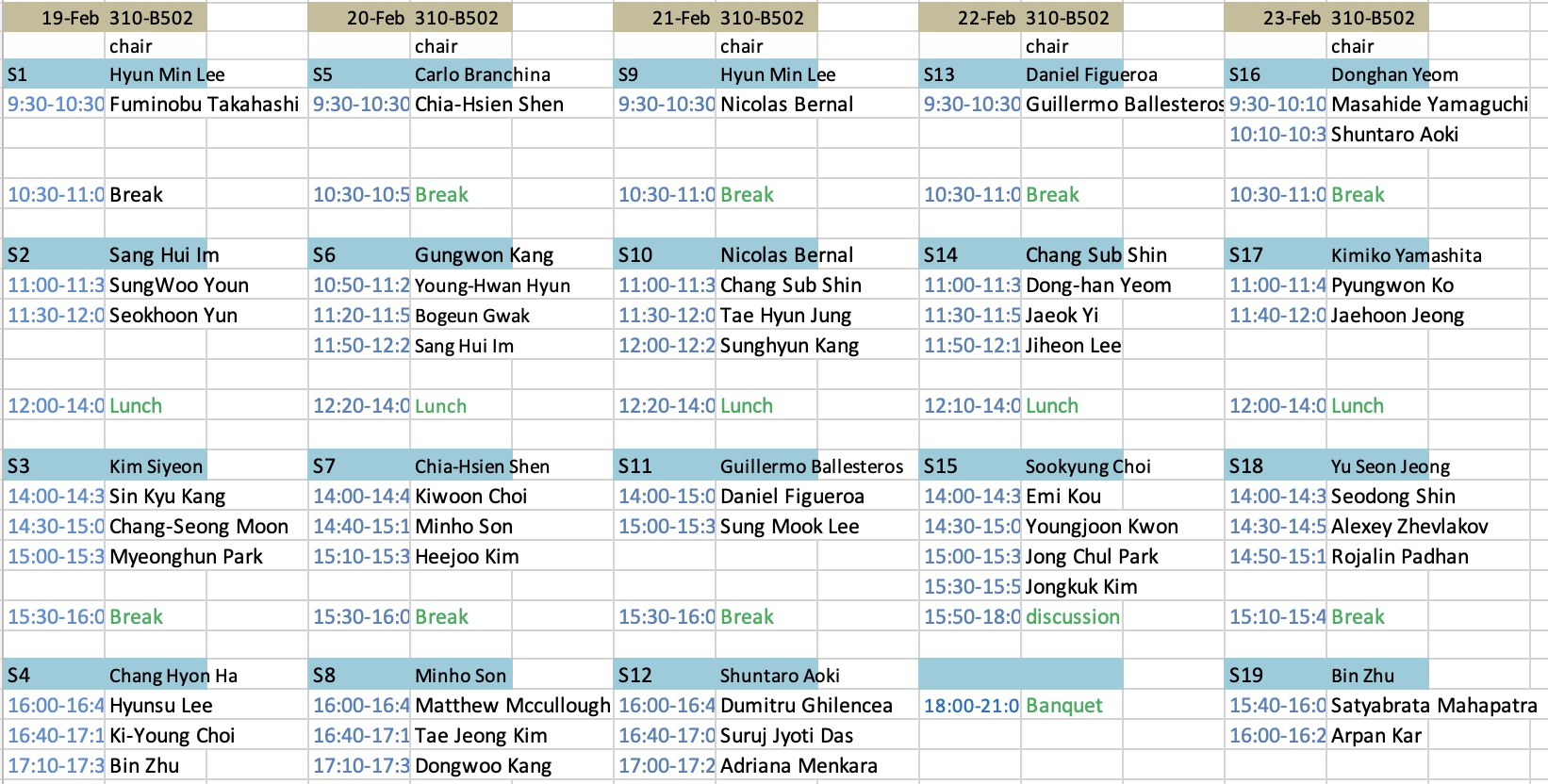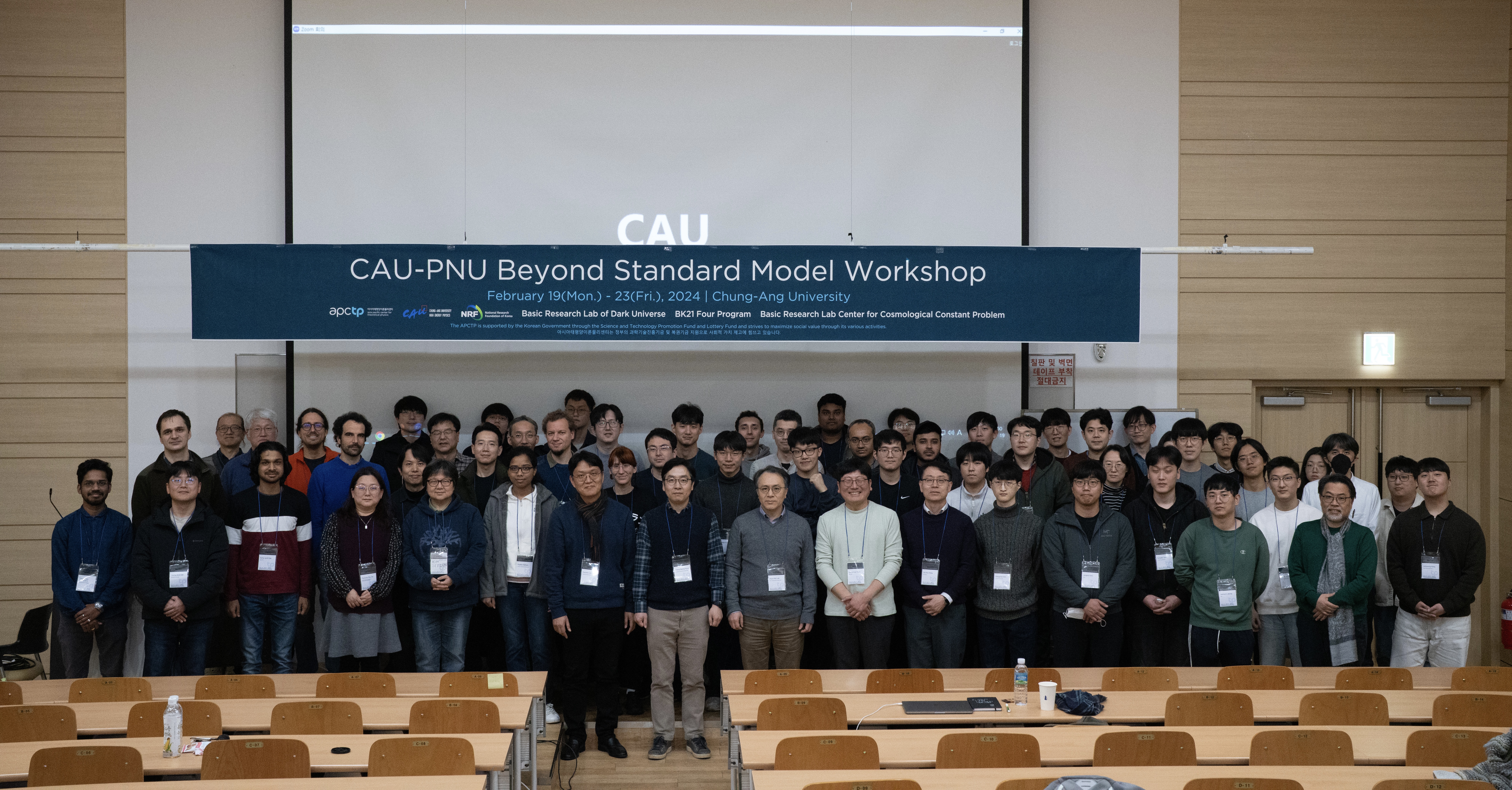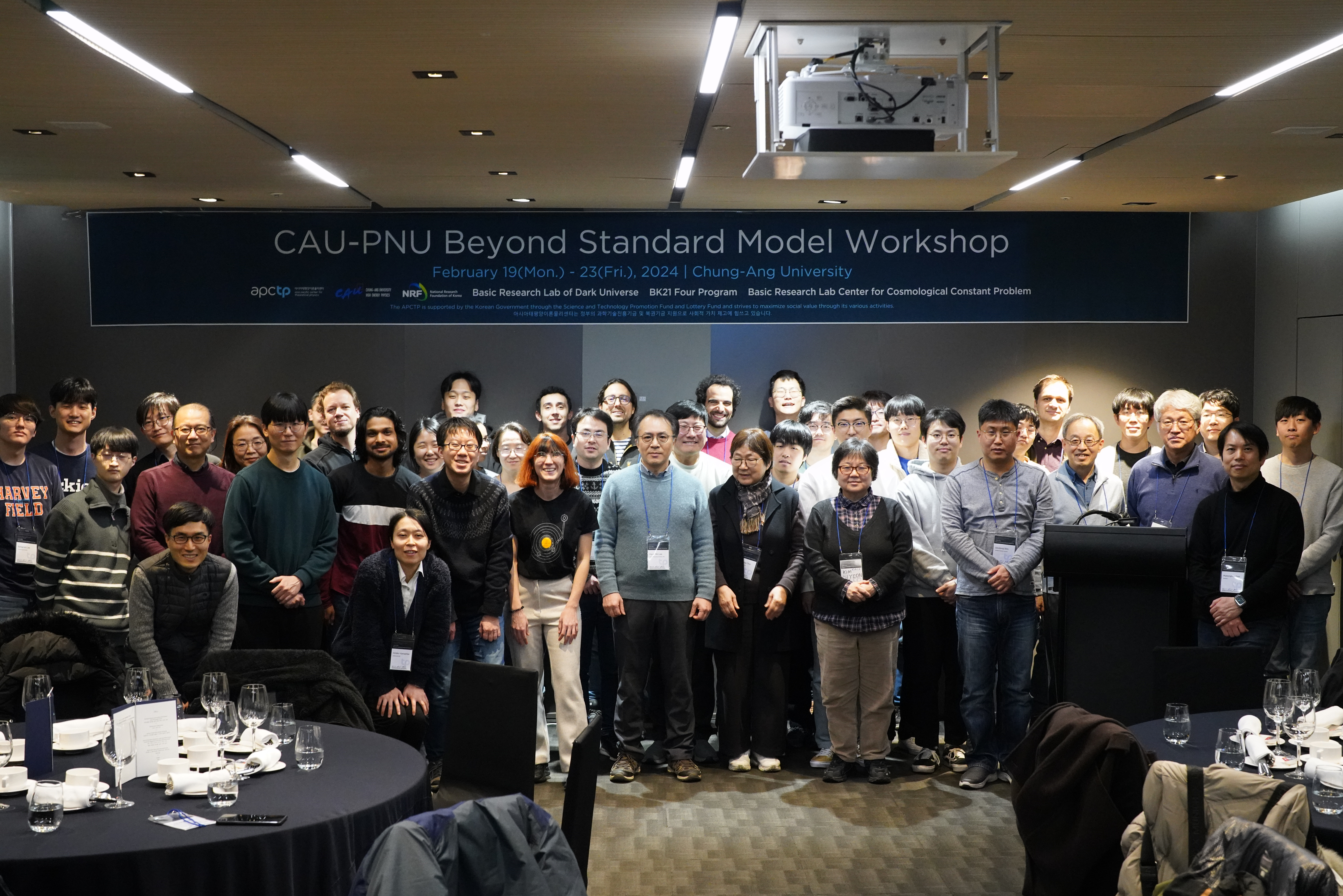2024 CAU-PNU Beyond the Standard Model Workshop
Centennial 310-B502
Chung-Ang University
The 2024 Chung-Ang University Beyond the Standard Model (CAU BSM) Workshop is the fourth international meeting on Physics Beyond the Standard Model (Higgs, Dark Matter, Neutrino, Axion, Flavor, Inflation, Gravitational Waves) in Chung-Ang University, Korea. The aim of the BSM Workshop is to discuss interesting current topics and initiate the collaboration between experts and participants working on BSM physics in the globe. The fourth workshop will be held as the joint efforts between CAU, Pusan National University and Yonsei University. Registered participants are supposed to attend the workshop only in person. We hope that the CAU workshop is to keep the community moving with lively discussion and participation.
===
Time table

![]()
![]()
---
Group photos


===
Invited speakers
Guillermo Ballesteros (Madrid, IFT)
Nicolas Bernal (New York Univ, Abu Dabhi)
Kiwoon Choi (IBS CTPU)
Ki-Young Choi (SKKU)
Daniel Figueroa (Valencia Univ)
Dumitru Ghilencea (Bucharest, IFIN-HH) - zoom
Bogeun Gwak (Dongguk Univ)
Young-Hwan Hyun (KASI)
Sang Hui Im (IBS CTPU)
Tae Hyun Jung (IBS CTPU)
Sin Kyu Kang (Seoultech)
Tae Jeong Kim (Hanyang Univ)
Pyungwon Ko (KIAS)
Emi Kou (IJCLab, Orsay)
Youngjoon Kwon (Yonsei Univ)
Hyunsu Lee (IBS CUP)
Sung Mook Lee (KAIST)
Matthew Mccullough (CERN) - zoom
Chang Seong Moon (KNU)
Jong-Chul Park (Chungnam National Univ)
Myeonghun Park (Seoultech)
Chia-Hsien Shen (NTU)
Chang Sub Shin (Chungnam National Univ)
Seodong Shin (Jeonbuk National Univ)
Minho Son (KAIST)
Fuminobu Takahashi (Tohoku Univ)
Masahide Yamaguchi (IBS CTPU-CGA)
Dong-han Yeom (PNU)
SungWoo Youn (IBS CAPP)
Seokhoon Yun (IBS CTPU)
===
Information
The third series: 2023 CAU BSM Workshop
The second series: 2022 CAU BSM Workshop
The first series: 2021 CAU BSM Workshop
CAU Department of Physics: http://physics.cau.ac.kr
CAU THEP Group: https://sites.google.com/site/cautheplab
CAU HEP Center: https://hep.cau.ac.kr